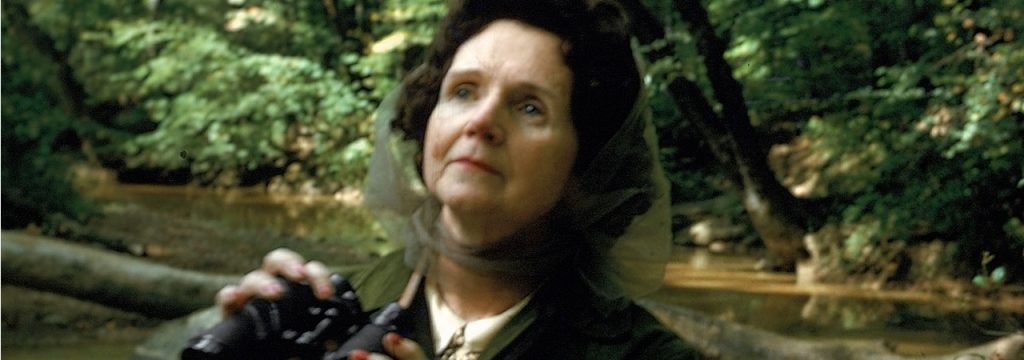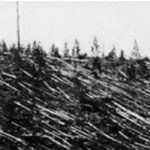
Rachel Carson (1907-1964) created quite a controversy with her widely read 1962 book, Silent Spring, which gave a sharp warning to the public that heavy reliance on pesticides in agriculture could bring about a "silent spring" by destroying plant and animal life. In the book, Carson presented information outlining the environmental dangers inherent in the use of pesticides and exposed legislative loopholes that allowed widespread use of dangerous pesticides.
Carson had known from an early age that she wanted to pursue a career in writing, but she came into the field of scientific writing in a circuitous fashion. She had actually published her first short story by the age of ten, and she entered Pennsylvania College for Women at the age of 17 with the intention of majoring in literature and pursuing a career as a writer of fiction. However, a biology course that she took in her sophomore year at Pennsylvania College for Women led her in an entirely different direction; she changed her undergraduate major from literature to biology and, after finishing her undergraduate degree, went on to graduate work in biology at Johns Hopkins University. Upon completing her studies, she was employed as a marine biologist for 14 years by the Fish and Wildlife Service of the U.S. government before she began writing Silent Spring.
Carson came up with the idea for Silent Spring after receiving a letter from a stranger in the state of Massachusetts who was disturbed by the effects of pesticides on her bird sanctuary. The letter writer had noticed that, whenever pesticide-spraying planes flew over her bird sanctuary to spray for mosquitoes, it was not only the mosquitoes that were affected; a number of other insects as well as bees and songbirds also succumbed to the pesticide spray. The fact that the state of Massachusetts was proposing even more extensive spraying was of great concern. This letter spurred Carson to approach the New Yorker magazine with a proposal for an article on pesticides.
Silent Spring was first published in serial form in the New Yorker, and the series of magazine articles created such enmity for Carson's ideas in some quarters that some who were offended by her message tried to prevent the publication of the book and to discredit Carson's ideas in quite a public fashion. Velsicol Corporation of Chicago threatened to pursue a lawsuit if the book was published based on the contention that statements in Carson's articles about Velsicol's product, chlordane, were misleading; the book's publishers underwrote a study to independently verify the statements that Carson had made about chlordane, the lawsuit never came to fruition, and publication of the book went forward. Beyond the threatened lawsuit and its attempt to prevent the publication of the book, a number of organizations were involved in very public attempts to discredit Carson's claims. The National Agricultural Chemicals Association created a publication, "Fact and Fancy," to refute Carson's contentions. The Nutrition Foundation, Inc. of New York City helped to widely disseminate a series of negative reviews of Silent Spring. The AMA News, a publication of the American Medical Society, suggested to its readers that they should look to National Agricultural Chemicals Society rather than Silent Spring for accurate information on pesticides. Carson, on her part, preferred to avoid public debates and discussions about her ideas and let her written words speak for themselves.
In spite of the strong negative response to Silent Spring from those in certain quarters, there were many positive results from the book. Rachel Carson was feted with praise and numerous awards for her book, and the information she had presented and the ideas she had espoused in it were the impetus for numerous important changes. Among changes attributed to Silent Spring were the establishment of both the Environmental Protection Agency and the Environmental Defense Fund. The Environmental Defense Fund took unprecedented legal action against the widely used pesticide DDT, and, as a result of this new direction in the legal arena, the use of DDT was banned in 1972.





